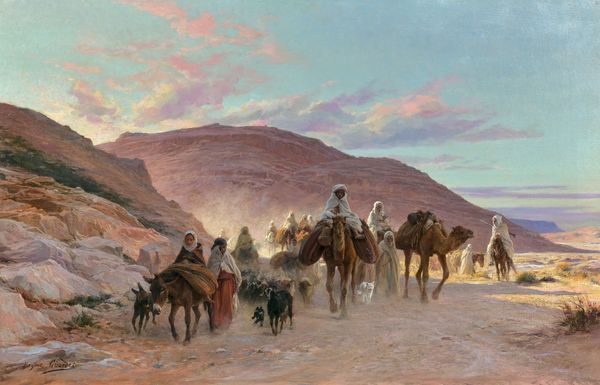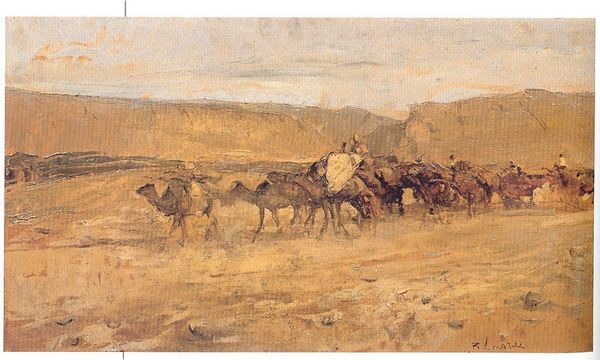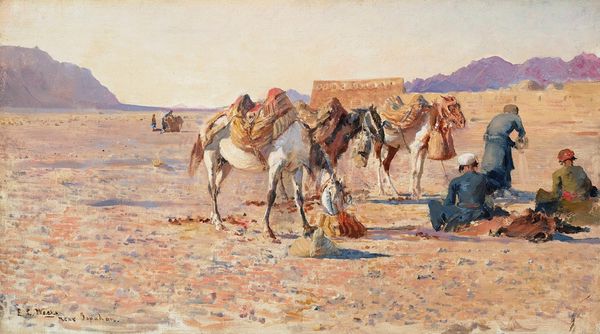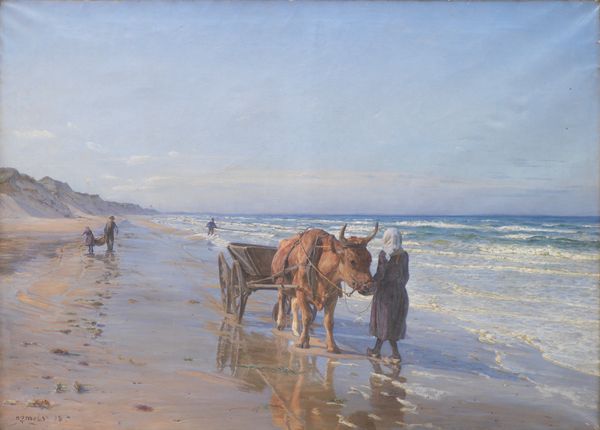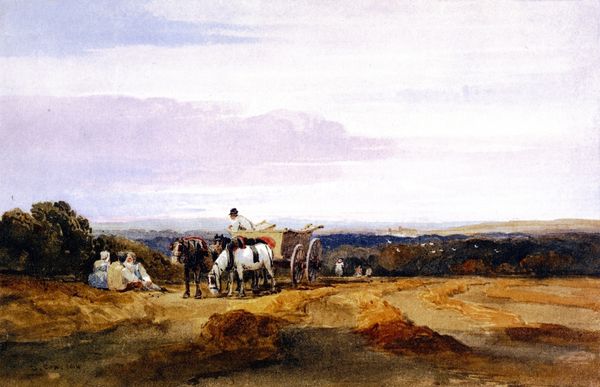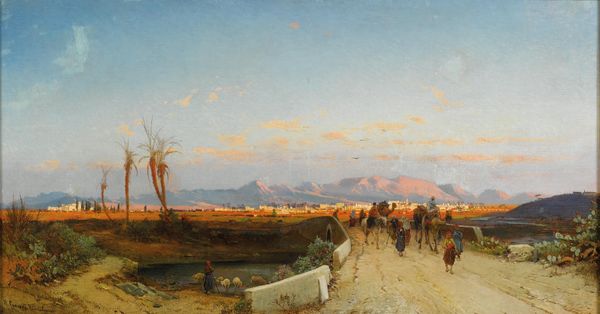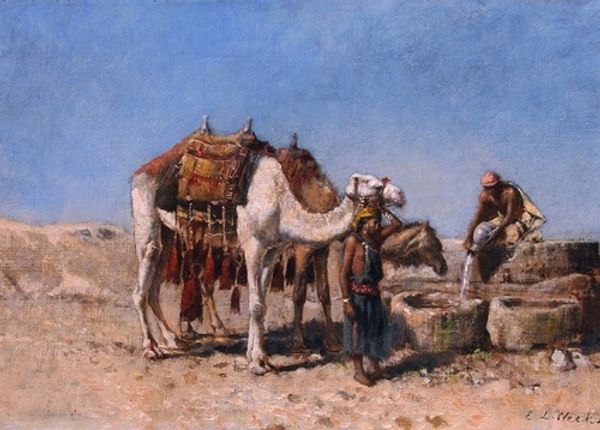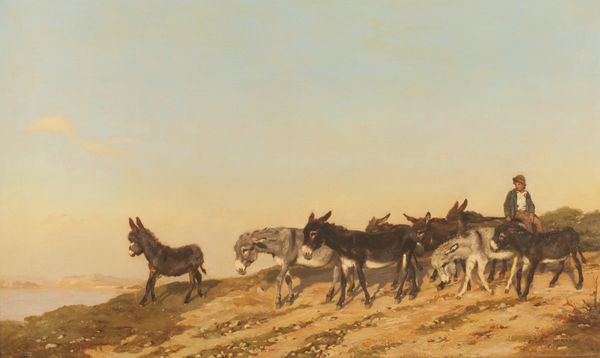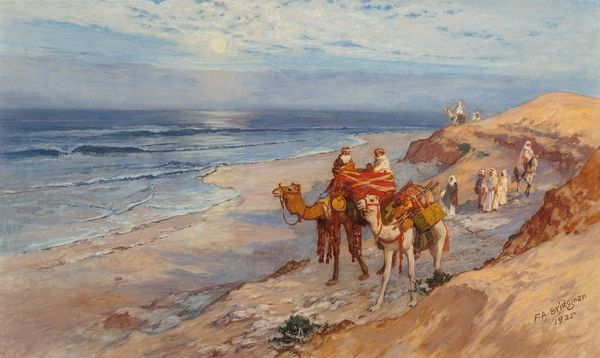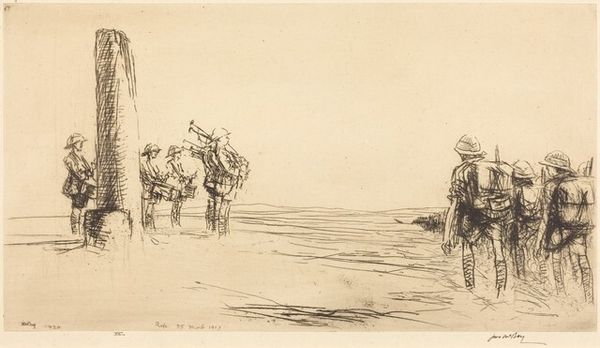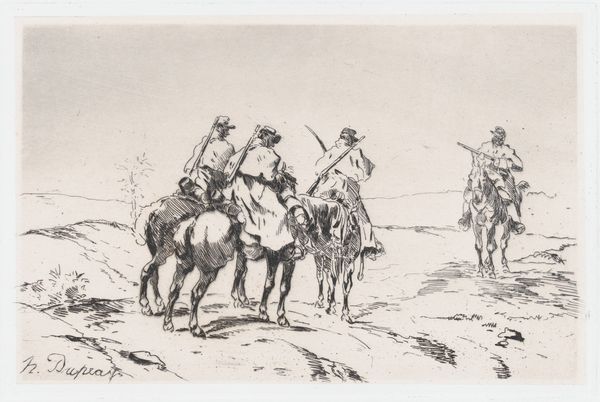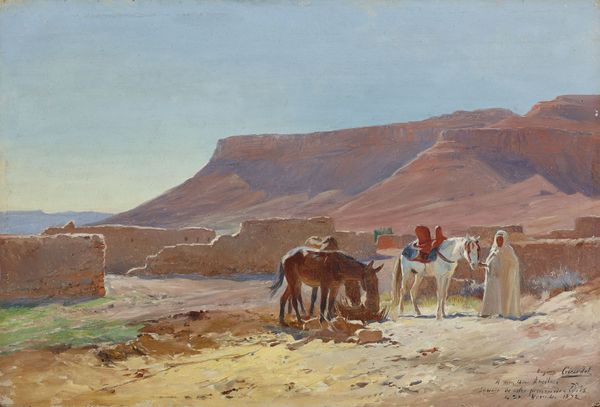
painting, watercolor
#
water colours
#
painting
#
landscape
#
watercolor
#
orientalism
#
genre-painting
#
realism
Dimensions: 40.4 x 27.3 cm
Copyright: Public domain
Curator: Eugène Girardet’s watercolor, "Arabs on a Coastal Road," offers a serene glimpse into a moment along a North African coastline. Editor: The light! It gives everything a dreamy, hazy quality. I'm struck by how… muted it all is. There’s a quietness, despite the figures and animals. It’s not romanticized grandeur, more of an observed moment. Curator: Girardet was, indeed, known for his depictions of the Middle East and North Africa. There’s an undeniable ethnographic element at play, especially considering his attention to details in clothing and the postures of the figures. We see repeating motifs here—the veiled figures and of course the prominence of the camel. What can these details reveal? Editor: I'd argue it is this focus on everyday scenes rather than staged or exotic fantasies that reveal colonial power dynamics. Girardet captures what he sees as authentic, naturalized "Arab" life along a liminal space. We also need to examine that term "Arab"—because whose stories get erased when they are clumped together as one singular ethnicity? Curator: A fair point. Focusing in on symbols, there's the motif of transit itself. We see a procession, a slow, deliberate movement across this border zone, a geographical liminality but a social and political one too. They're suspended, perhaps betwixt and between two ways of being. Notice how their backs are largely to the viewer, turning away. Editor: I’m also thinking about who this artwork was for. Was Girardet's Western audience genuinely interested in learning about these communities, or was this just another form of colonial consumption—reaffirming perceived cultural differences while enjoying it from a safe distance? Who can afford it? And what fantasies about race and power are being sold alongside the landscapes? Curator: Precisely. By acknowledging this painting’s presence within this complex system, it urges us to re-evaluate and challenge its original intents while expanding our collective understanding. The cultural memory, then, lies not merely in the depicted scene, but in this active ongoing dialogue with our present and with each other. Editor: Absolutely. We have to read against the grain, challenging what the artist leaves unsaid. Engaging with the historical and social context, and recognizing the ongoing legacy of colonialism allows us to unearth complexities that we can use to shape the conversations we have around cultural differences today.
Comments
No comments
Be the first to comment and join the conversation on the ultimate creative platform.
